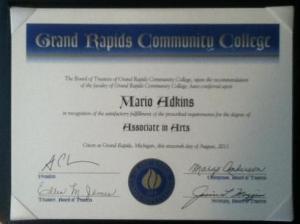Planning, coordinating and facilitating specific-themed programs (events, workshops, etc.) are one of the main assignments RAs must complete, typically twice or more on a monthly bases. However, if the programs are irrelevant to the students, then a lot of time, energy and effort will be wasted. That said, below are three practical ways to build and facilitate successful programs for schedule-tight students.
Advertisements
Informative fliers, social media and chalk drawn sidewalks are just a few advertising methods students are used to getting information from on and around campus. The key here is to use the least amount of words to give the most amount of information. Honesty with what to expect is also important–so if you’re advertising an Xbox tournament from a huge projection screen it better be there!
Framework
As the program facilitator, developing and following an agenda is a must–rather it’s a high energy or low energy program. If the students never see order, you’ll never see them again. Time is another factor, chose the best time frame that works for most students. If the program is an hour and a half and starts and ends at a specific time try to follow that schedule. Finally, although programs follow a specific theme, aim to facilitate a program that reaches a wide range of students; you want to maximize your audience, not minimize it.
Incentives
Most students have a tight schedule with varying time constraints, so anything extra added to their schedule must be somewhat valuable to them as students. Most programs have a direct benefit depending on its theme, (budgeting, time management, etc.) though the indirect benefit is just a critical. The attached image is of Program Reward Cards I made, and every time a student attends a program I design they get a stamp. Obtaining six stamps and completing the card allows the student to trade it in for an exclusive prize at the end of the semester. The program reward card can also easily travel with the students where ever they go. Incentives like these can definitely motivate students to attend more programs then they would have otherwise.
 Mario Adkins is a senior at Grand Valley State University (GVSU). When not drawing or playing his favorite video games, he can be found on campus facilitating programs and events as both a resident assistant and vice president of membership for GVSU’s OΔK Circle–a national leadership honor society. Follow him on Twitter @zerolocked.
Mario Adkins is a senior at Grand Valley State University (GVSU). When not drawing or playing his favorite video games, he can be found on campus facilitating programs and events as both a resident assistant and vice president of membership for GVSU’s OΔK Circle–a national leadership honor society. Follow him on Twitter @zerolocked.





